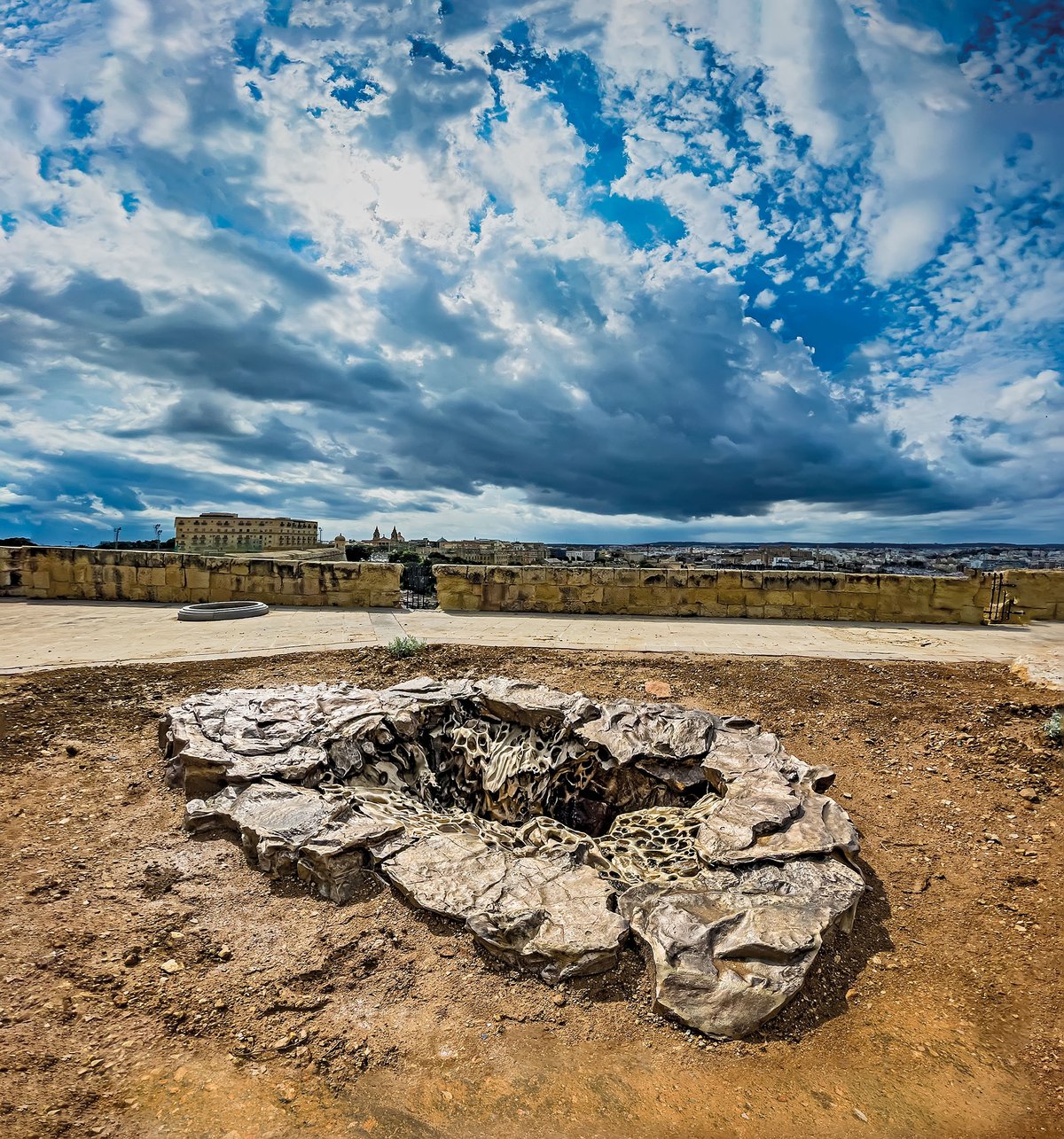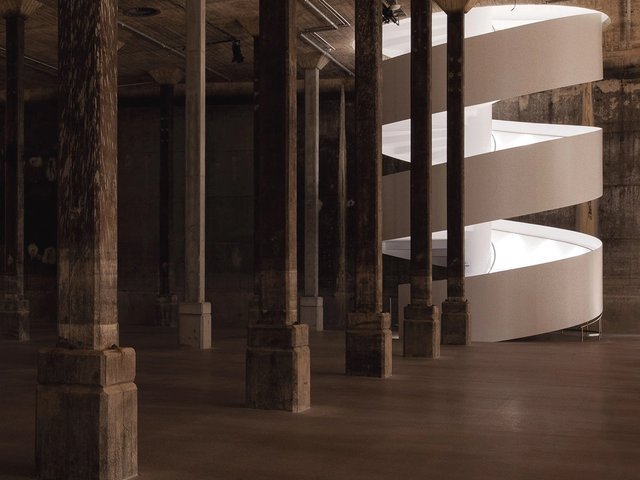Malta celebrated a new addition to its contemporary art collection on Friday, with the unveiling of an outdoor sculpture by the Spanish artist Cristina Iglesias as part of the third edition of the island’s International Art Weekend (15-16 October).
Sea Cave (Entrance) was commissioned by the Malta International Contemporary Art Space (Micas), a state-sponsored organisation set up in 2018 to help establish Malta’s position in the contemporary art scene. Funded through public and private channels, Micas says that it aims to build on Malta’s rich history as a cultural crossroads to foster a contemporary dialogue between local and international artists. The organisation's gallery building is due to open in 2023 with the whole site due to be completed by 2025. Iglesias's sculpture, currently located in the public space Hastings Gardens in Valletta, will eventually be relocated to Micas's sculpture garden.
Overlooking Valletta’s Marsamxett Harbour and located within 17th- and 18th-century fortifications known as the Floriana Lines, the Micas galleries will repurpose an area that has been disused for more than 60 years to include indoor and outdoor spaces for temporary exhibitions.

Cristina Iglesias's Sea Cave (Entrance) is located in Valetta's Hastings Gardens. Photo: Daniel Cilia. Courtesy of Micas
Malta has a number of archaeological sites and Baroque treasures but without a dedicated space, recent generations of artists have remained on the fringes. Many, including the interior designer and ambassador of culture for Malta, Francis Sultana, have gone abroad: ”I had to take a big risk and leave Malta aged 19. I had no institutions, no museums, no exhibitions of any relevance to me as someone who wanted to be contemporary. There’s a lot of talent in this very small country, and they deserve to have a place to be able to go and see things.”
The curator and Micas board member Georgina Portelli says that documenting and recognising local artists is essential to the development of a thriving art scene: Micas’s first commission was by the Maltese artist Raymond Pitrè, and a digital exhibition of local artists is planned for next year. Edith Devaney, also a curator and Micas advisor, says: “This [digital show] will give local artists incredible reach to promote their work internationally; giving local artists an opportunity to show their work is very important.”
For the London-based art critic Rajesh Punj, who conducted a series of artist interviews on behalf of Micas during the Covid-19 lockdowns, the balance between exhibiting international and homegrown artists is a delicate one: “It must be that the ideas and the exhibitions are interventions, not invasions upon what already exists artistically and culturally”, he says.
Avoiding a top-down, prescriptive approach is key. Micas plans to nurture the local scene through schemes such as the artists’ residencies that are due to begin in 2025.
Eventually, it is hoped that Micas will seed the market, with the opening of some commercial galleries, and perhaps a fair. But though the effects may not all be immediate, Micas's chairperson Phyllis Muscat is keen to emphasise what has been achieved so far: “I think what we’ve done is remarkable considering that we don’t have a space yet”.




